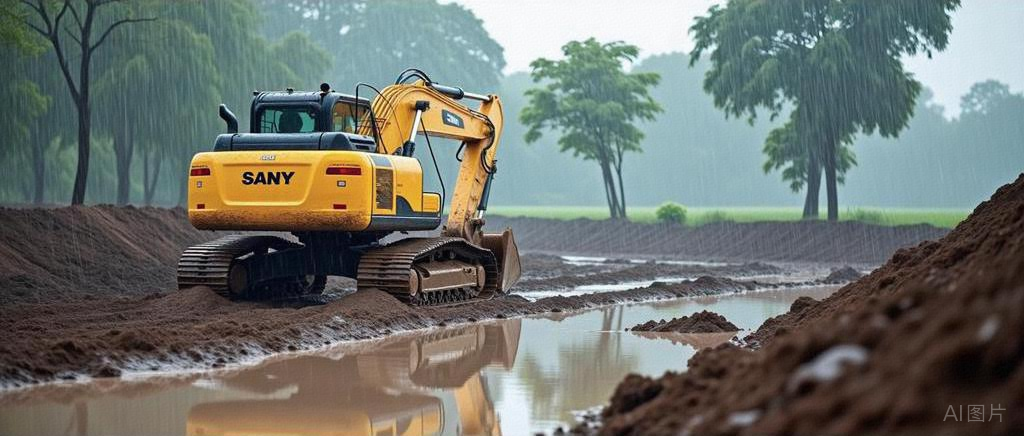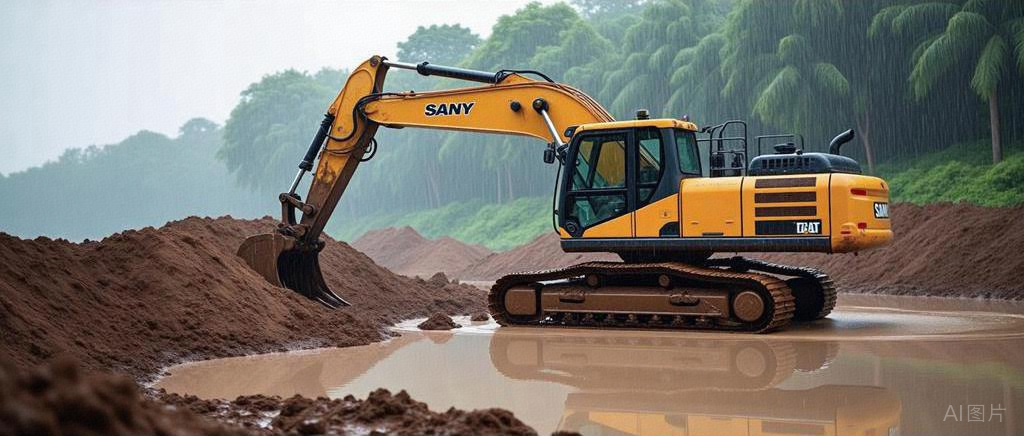Rainy Season Excavator Maintenance Guidelines: Key Points to Remember
As the rainy season approaches, excavators face a variety of challenges during operations. Today, we’ll review the essential maintenance guidelines for excavators after rain.

1. Thoroughly Inspect the Exterior and Structure
Heavy rainfall may bring debris, mud, and sand, which can cause damage to the excavator's appearance and structure. Start by carefully inspecting the excavator’s body, checking for scratches, dents, or other damage, especially around the cabin and track areas. These parts are more likely to be scratched by debris, rocks, or branches after the rain. Next, inspect the connections of the boom, arm, and bucket to ensure there are no loose parts or deformations, preventing future detachment or structural damage during subsequent operations.

2. Focus on the Electrical System
Rainwater is a significant threat to electrical systems. After rain, it’s crucial to check the excavator’s battery, generator, starter motor, and other electrical components for signs of water intrusion or moisture. If you find water in the battery compartment, wipe it off with a dry cloth to prevent short circuits. Inspect the terminals of the generator and starter motor to ensure there are no loose connections or signs of oxidation. Additionally, check if the dashboard, lights, and horn are functioning properly.

3. Check the Hydraulic System
The hydraulic system is the "heart" of the excavator, so inspecting it is critical. Check the oil level in the hydraulic oil tank and inspect the hydraulic fluid for any signs of emulsification (milky appearance). If emulsification is detected, it indicates water contamination, and you should replace the hydraulic oil and filter. Additionally, inspect the hydraulic lines for any cracks or leaks. Due to temperature changes or external forces after rain, hydraulic lines are prone to cracks. If any are found, they must be addressed immediately, as this can affect the excavator's performance and stability.

4. Care for the Chassis and Tracks
The excavator's chassis and tracks can accumulate a lot of dirt, sand, and stones after rain. If not cleaned promptly, this can cause excessive wear on the tracks and affect the machine’s mobility. Use a high-pressure water gun to clean the chassis and tracks, removing any debris. For stubborn mud, use a brush to assist in cleaning. Afterward, check the track tension to ensure it is properly adjusted, and inspect the track pads for cracks or severe wear. Additionally, check the carrier rollers and track rollers for water ingress or oil leaks, and add lubricants as necessary.

5. Safety Precautions During Operation
After rainfall, the ground can be slippery and soft. During operation, make sure to park and operate the excavator on solid ground, avoiding muddy, sloped, or unstable areas. When excavating, control the digging force to prevent the excavator from tilting or overturning due to excessive force. Additionally, maintain a safe distance from surrounding buildings, power lines, and other hazards to prevent accidents caused by poor visibility or operational mistakes.
After-rain inspections and maintenance of excavators are critical to ensuring operational safety and efficiency. Every detail matters, and keeping these points in mind will ensure that your excavator remains in optimal condition and ready for work after the rain!